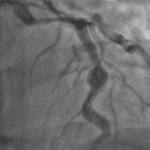1. This multicenter cohort study of 3922 children with Kawasaki disease (KD) demonstrated that there was a 28.2% decline in KD cases in the United States during 2020 (646 cases), compared with 2018 (894 cases) and 2019 (905 cases).
2. School closures, mask mandates, decreased ambient pollution, and decreased circulation of respiratory viruses during the COVID-19 pandemic overlapped to various extents with the period of decreased incidence of KD.
Evidence Rating Level: 2 (Good)
Study Rundown: Kawasaki disease (KD) is a self-limited, inflammatory condition affecting blood vessels in children. KD evokes an acute innate immune response and is characterized by high levels of markers of inflammation and mucocutaneous signs. During the COVID-19 pandemic, public health measures had effects on population behaviors and transmission of infectious diseases. As such, this multicenter cohort study investigated the change in the incidence of KD across the United States and evaluated whether public health measures implemented during COVID-19 affected the prevalence of KD. This study combined analysis of 2 data sets on KD incidence, (1) a multicenter trial for KD (KIDCARE) that included consecutive, unselected patients diagnosed with KD between 2018 and 2020, and (2) a single pediatric referral center, Rady Children’s Hospital San Diego (RCHSD) with patients diagnosed with KD between 2002 and 2021. The main measure of the multicenter cohort was the date of fever onset in each patient with KD. In the RCHSD cohort, demographic and clinical data were collected. A total of 2461 KD cases were included in the multicenter cohort (2018: 894, 2019: 905, 2020: 646), and 1461 KD cases from RCHSD cohort. In the multicenter study, there was a 28.2% decline in KD cases nationally, while in the RCHSD study, there was a disproportionate decline in KD cases in 2020 to 2021 compared to previous years in children aged 1 to 5 years, male children, and Asian children. Clinical manifestations of KD including strawberry tongue, enlarged cervical lymph nodes, and subacute periungual desquamation were decreased during 2020 compared to baseline. Public health measures such as school closures, mask mandates, and decreased ambient pollution overlapped to various extents with the period of decreased KD cases observed. A strength of this study was its in-depth analysis of the association of pandemic-related behavior and environment changes with KD incidence, however a limitation was the use of a small samples size.
Click to read the study in JAMA Network Open
Relevant Reading: Incidence of Kawasaki disease before and during the COVID-19 pandemic: a retrospective cohort study in Japan
In-Depth [prospective cohort]: This study examined the change in KD incidence in the United States and assessed whether public health measures implemented during COVID-19 affected the prevalence of KD. A total of 2461 KD cases were included in the multicenter cohort (2018: 894, 2019: 905, 2020: 646), and 1461 KD cases (median [IQR] age, 2.8 years [1.4-4.9 years]; 900 [61.6%] males; 220 [15.1%] Asian, 512 [35.0%] Hispanic, and 338 [23.1%] White children) in the RCHSD cohort between 2002 and 2021. Nationally, there was a 28.2% decline in KD cases during 2020, in comparison to 2018 and 2019 in the multicenter cohort. In the RCHSD cohort, the 2020 and 2021 decline in case numbers was statistically significant compared to the base period (2020: 44% reduction, 43 vs 76.8 [15.6]; P=.02, 2021: 53% reduction, 36 vs 76.8 [15.6]; P=.009). The 2020 decline was associated with a reduction in KD compared with the mean (SD) number of cases in the base period for children aged 1 to 5 years (22 vs 44.9 [9.9]; P=.02), male children (21 vs 47.6 [10.0]; P=.01), and Asian children (4 vs 11.8 [4.4]; P = 0.46). A comparison between pre- pandemic and the COVID-19 lockdown of 2020 showed that there was a significant reduction in the onset of clinical manifestations of KD including strawberry tongue (39% vs 63%; P=.04), periungual desquamation (47% vs 58%; P = .16), and enlarged lymph node (21% vs 32%; P=.09).
Image: PD
©2022 2 Minute Medicine, Inc. All rights reserved. No works may be reproduced without expressed written consent from 2 Minute Medicine, Inc. Inquire about licensing here. No article should be construed as medical advice and is not intended as such by the authors or by 2 Minute Medicine, Inc.


